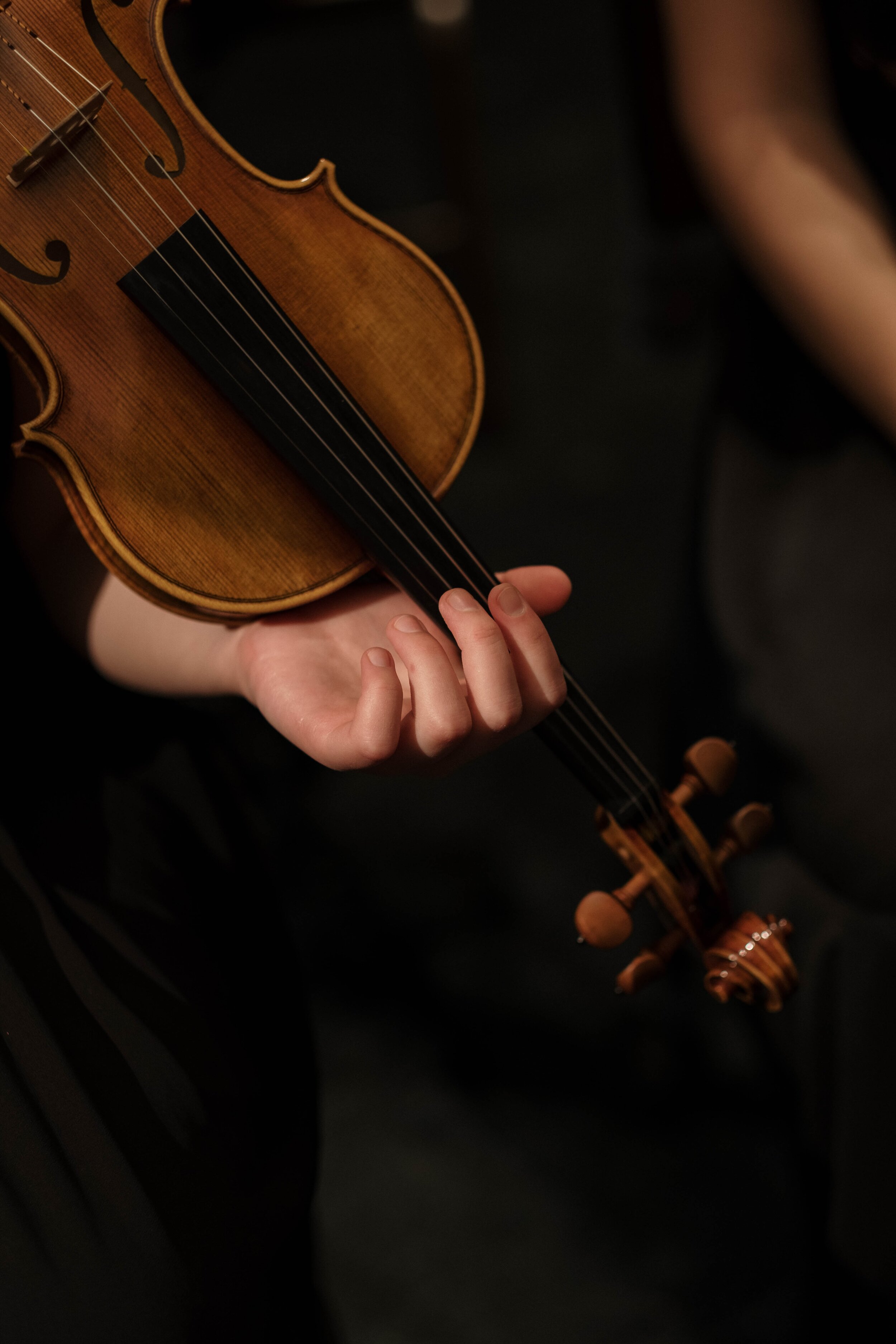App Idea 2: Violin
June 22nd, 2021
Here’s another app idea.
The Problem
Unlike guitarists, violinists struggle learning where to put their fingers.
Guitarists have frets, which are lines that indicate where to put their fingers.
Violins don’t have frets, so violinists struggle to learn where to put their fingers.
They have to learn what the note is supposed to sound like, listen to the notes they’re playing, and memorize the position.
But most violinists get into the bad habit of memorizing the wrong spot, so they play out of tune.
It can take 5-10 years for violinists to play in tune well enough to sound good.
Putting your finger in the right location is called intonation.
Violinists struggle to efficiently train their fingers to have good intonation.
The only times violinists correct their intonation efficiently is when their teachers correct them in the moment during their weekly lessons. Violinists don’t have that help while they practice throughout the week.
Currently, the main solution is just for violinists to train their ear to memorize the correct note, but that is very difficult and can take years.
Plus, violinists have other things to focus on that it’s demotivating to practice something that is vague and difficult.
So there aren’t many options or incentives to improve intonation, but everyone wants to improve their intonation because it’s so obvious when you’re not playing in tune.
Solution
How do we help violinists improve intonation faster?
This is a very simple app idea.
The app would listen to how the violinists’ notes actually sound and compare it to how it’s supposed to sound.
Then the app could give the violinist a percentage on how well their intonation is, as well as a note by note breakdown on which notes were out of tune and by how much.
Speed
Instead of spending 5-10 years getting to the point where violinists “sound good,” they could start “sounding good” so much sooner.
The only times violinists really correct their intonation is when their teacher corrects them in their weekly lessons.
An app is a teacher in their pocket.
The app can show violinists in the moment, like a teacher, which notes they need to work on so they can correct their intonation immediately.
Confidence
Violinists feel demotivated when they don’t “sound good.”
But an app could show their progress numerically.
Let’s say a violinist starts learning a song and has an intonation score of 54%.
The violinist could analyze which notes he or she is playing too high or playing too low.
The violinist would know what to work on, work on it, and improve.
Then he or she could see progress numerically — from 54%, to 63% to 75% all the way up to the 90’s.
This app would gamify their practice and help violinists practice better.
Violinists would get addicted to practicing.
B2B Business Model
Who would you sell to?
The real question is which violinists want to improve the most?
The answer: college violinists.
Collegiate violinists are most incentivized because their professional success relies on their performance and improvement during their crucial college years.
Additionally, all university orchestra directors want their violinists to sound more in tune.
So the orchestra director would also be incentivized to have their violinists use the app’s service to improve their intonation.
The director could even have access to everyone’s individual intonation scores and see who is improving and by how much.
Thus, directors and violinists would both be incentivized to use the app.
You would need to pitch this idea to the financial decision makers of the music schools with the director in the room because the director will convince the financial decision makers that this is a good idea.
You could charge by the number of violinists, or any musician, who use it.
Competitors
There is currently one competitor in the market for an app like this, Tonal Energy (https://www.tonalenergy.com/).
However, their app feels as complex as the control panel of a spaceship.
It’s not user-friendly and the app has suffered “feature frenzy.”
Most violinists do not talk about the ideas behind all of Tonal Energy’s features, let alone use them.
In order to reach the masses, the app must be drastically simple in comparison to Tonal Energy.
The app would only focus on one things: real-time intonation.
Violinists (and most musicians for that matter) don’t want to know how well they can play their scales in tune as much as they want to know how well in tune they can play their piece.
It’s playing their pieces that needs attention.
In scales, you play notes in order. In pieces, you play notes randomly.
That makes it harder to play in tune, and that’s why musicians like violinists want to know more about their intonation while playing a pieace as opposed to playing their scales.
That requires a specialized app like this one.
Expansion
University music schools would be interested in having this for any musician who uses an instrument without a clear indication of playing notes in tune.
These include, violists, cellists, bassists, trombonists, among others.
After you enter the collegiate market, you can expand to a B2C model where individuals who are serious about their intonation can use it.
This includes competitive high school musicians, child musicians, and even adult musicians.
Intonation is key to “sound good” as a musician.
This app will eventually exist and become a ubiquitous tech innovation in the music industry.
Will you be the one to lead this innovation?






